
Michael Doak
‘Through thoughtful design, my goal is to create innovative and sustainable landscape spaces connecting people with nature.’
Conceptualised as a ‘green spine’ through Sydney’s southern suburbs, Gujaga Park, McCarthy Reserve and Brighton Memorial Playing Fields provide a wide range of sport and recreation facilities for the community, while also remediating natural habitat and the endemic swamp ecosystem. We spoke with the lead landscape designer, Michael Doak, about the highlights and challenges of the project.
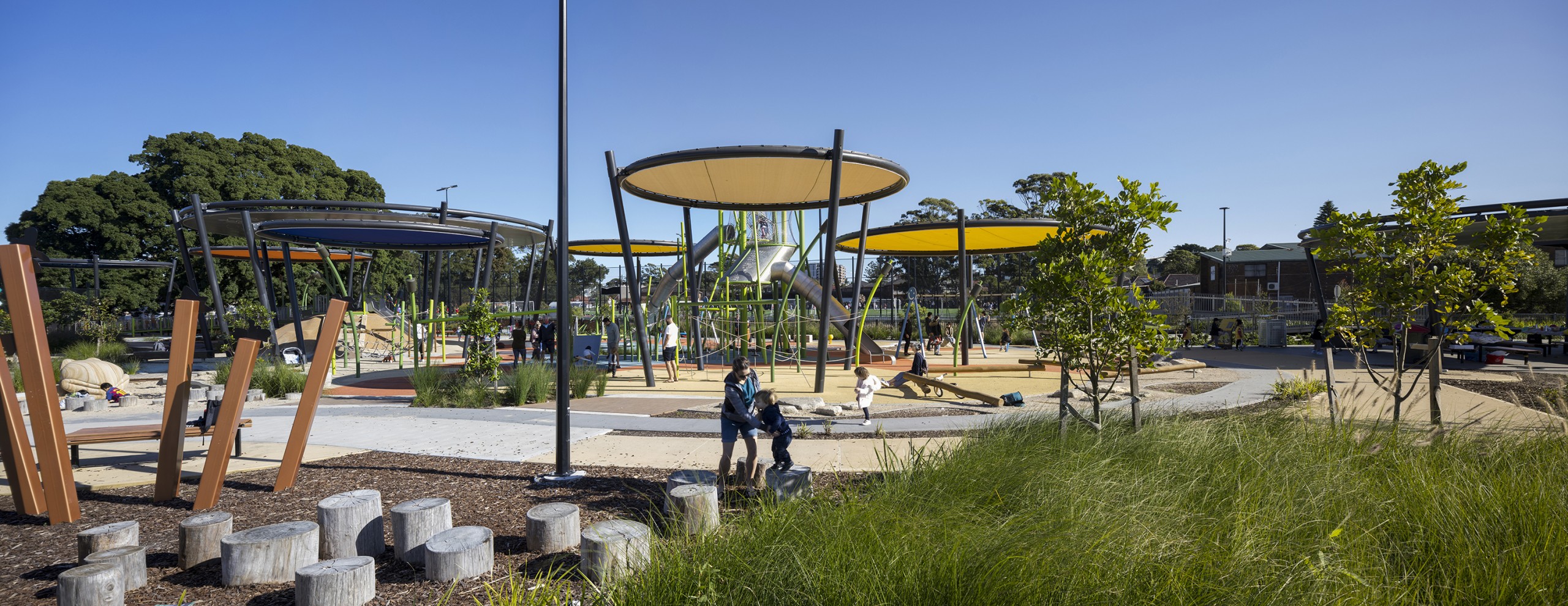
Michael, can you tell me the genesis of this project?
Somewhat surprisingly for a large parkland project, our client was Transport for NSW. When planning the new M6 tunnel in Rockdale, it became clear that Bicentennial Park—one of the biggest sport and recreation facilities in the area—was going to be out of action for about five years during the construction phase. Transport for NSW proposed three new parks—Gujaga Park, McCarthy Reserve and Brighton Memorial Fields—be built to offset this. It’s a win-win for the community really, as they get these brand new incredible parks, then once the M6 tunnel is finished, Bicentennial Park will also be rebuilt as a reimagined parkland facility.
That’s really interesting. What were these parks before?
The northern zone had two areas with a canal (Muddy Creek) running down the middle. On one side was McCarthy Reserve, which was a pretty basic grassy sports field without many facilities. The other side was vacant land strewn with rubbish, now Gajuga Park.
It’s a win-win for the community really, as they get these brand new incredible parks, then once the M6 tunnel is finished, Bicentennial Park will also be rebuilt as a reimagined parkland facility.
And how did the design come about?
We had quite a comprehensive research and consultation phase. As the purpose of these parks was to offset Bicentennial Park, the starting point was to make sure all of the existing facilities were included in the new design – sports fields, a skate park, toilets, a playground and parking. This became our starting brief. We then connected with various stakeholders to get their input. Our key stakeholder was Bayside Council, who owns the land. They had existing research about the needs of the community in the area, and guidelines of the amenities buildings to fit with other facilities in the area. One of the key requests from Council was for there to be a lot of shade, particularly in the years before new trees grow large enough to provide canopy shade. We also met with the Rockdale Sons, a local sports group, who provided suggestions for requirements for the sports facilities.
Before starting the design, our team did some ‘on the ground’ research into how people were using the existing facilities. We spent a few days monitoring which equipment and facilities were popular, times of the day they were being used, group sizes etc.
As the design evolved, we consulted with key user groups and refined the design in light of their feedback. For example, we engaged with a skate group about the skate park design. Our initial proposal was a ‘plaza style’ skate park with rails, but they wanted a full skate park with bowls and ramps so we changed the design.
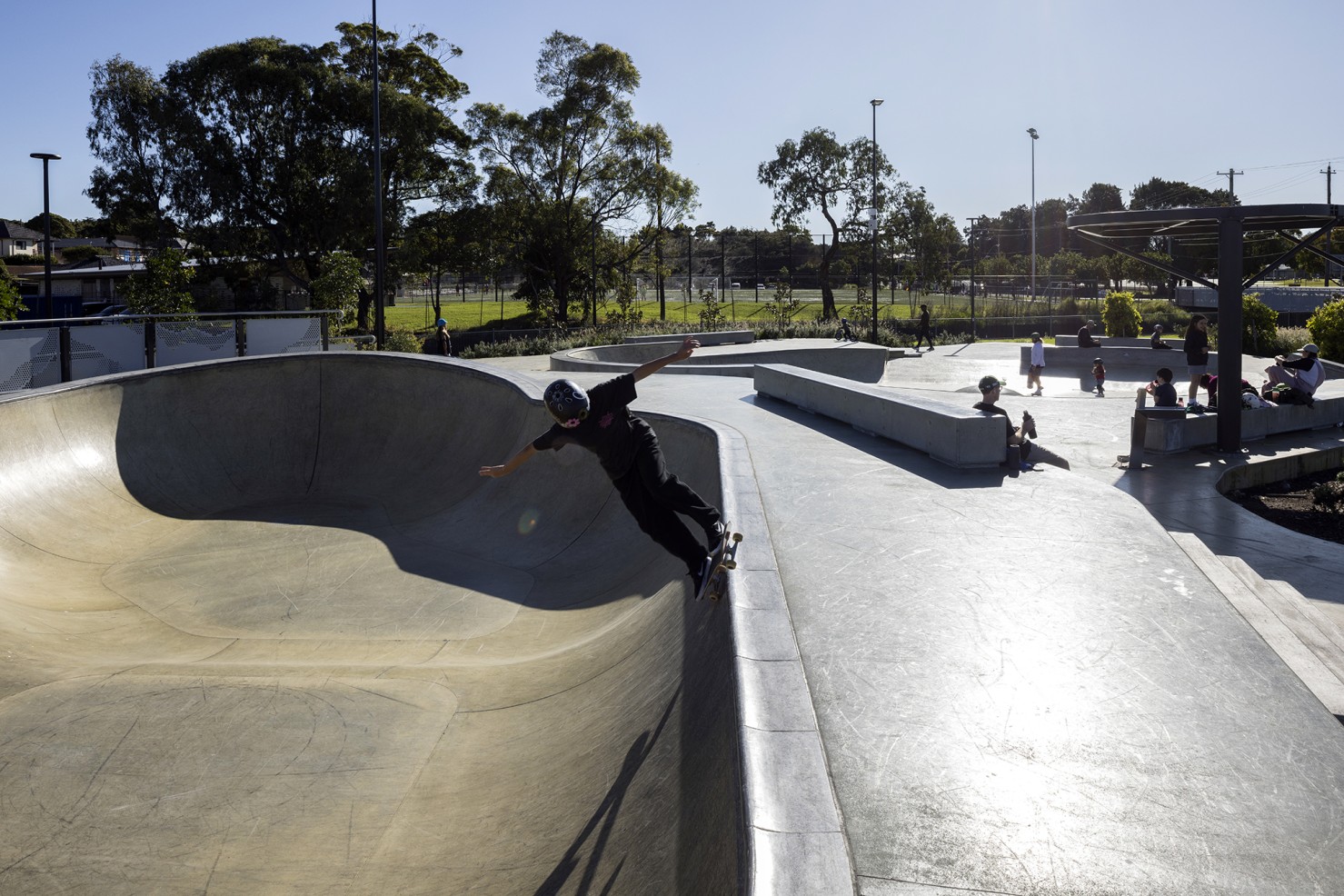
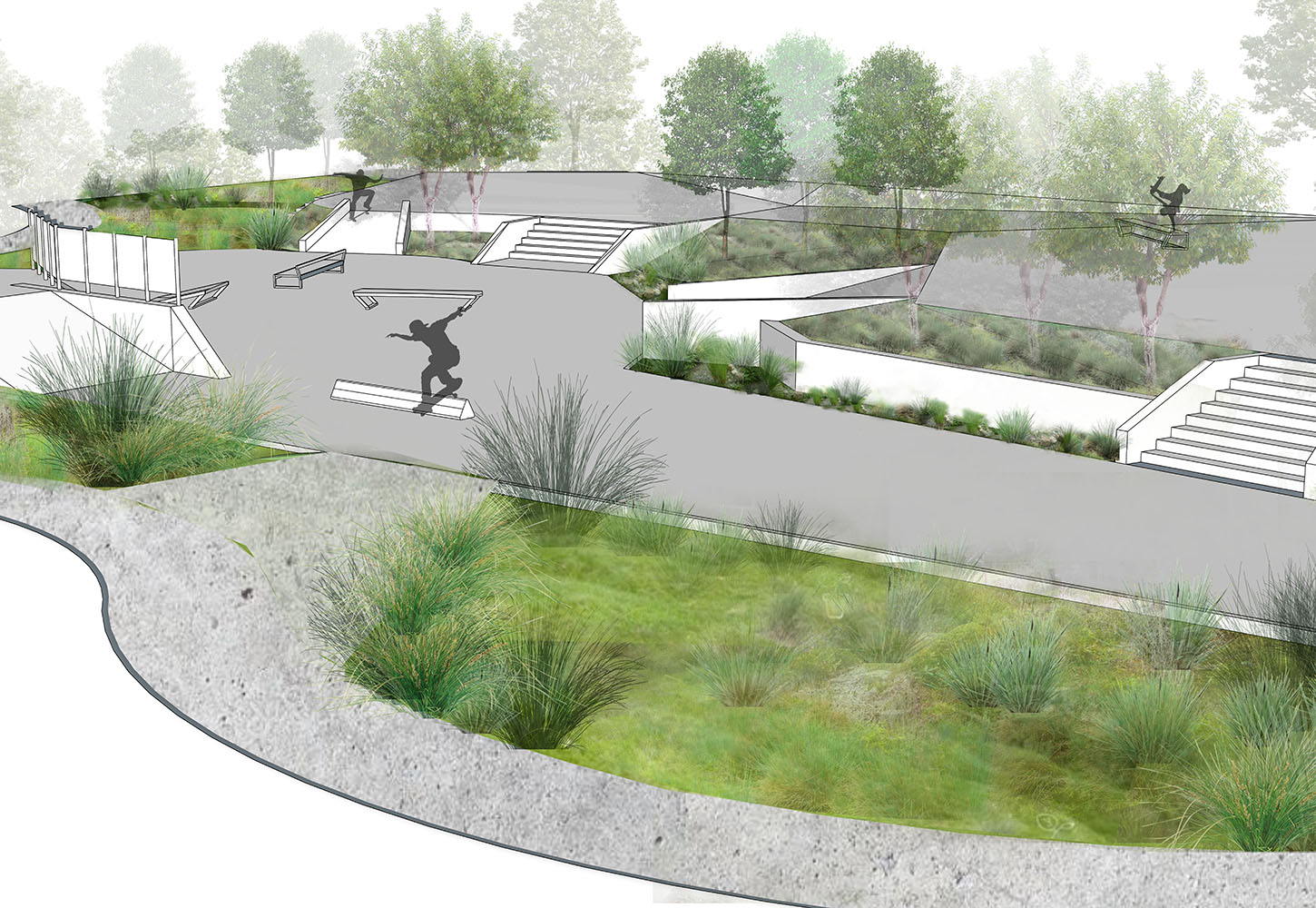
As the design evolved, we consulted with key user groups and refined the design in light of their feedback. For example, we engaged with a skate group about the skate park design. Our initial proposal was a ‘plaza style’ skate park with rails, but they wanted a full skate park with bowls and ramps so we changed the design.
What are the facilities in the parks?
The two park zones are about two km apart from each other, with suburban streets in between.
The first zone has Gujaga Park and McCarthy Reserve—connected by a pedestrian bridge over the canal—which collectively have the following facilities:
These facilities are surrounded by planting of native grasses, shrubs and trees that are future-ready so they can tolerate the swamp conditions and should be able to survive with minimal care. Water sensitive urban design (WSUD) principles are applied throughout.
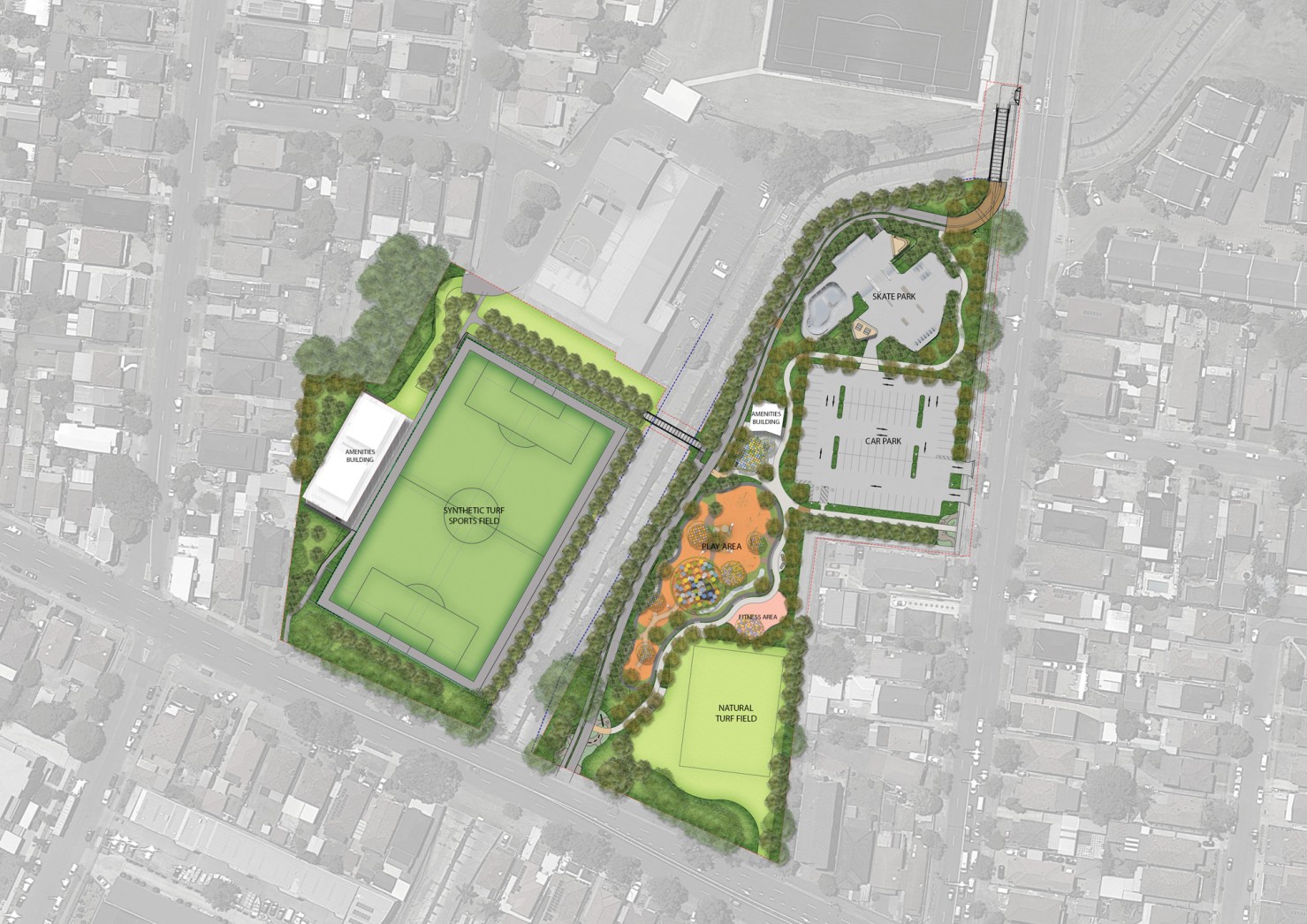
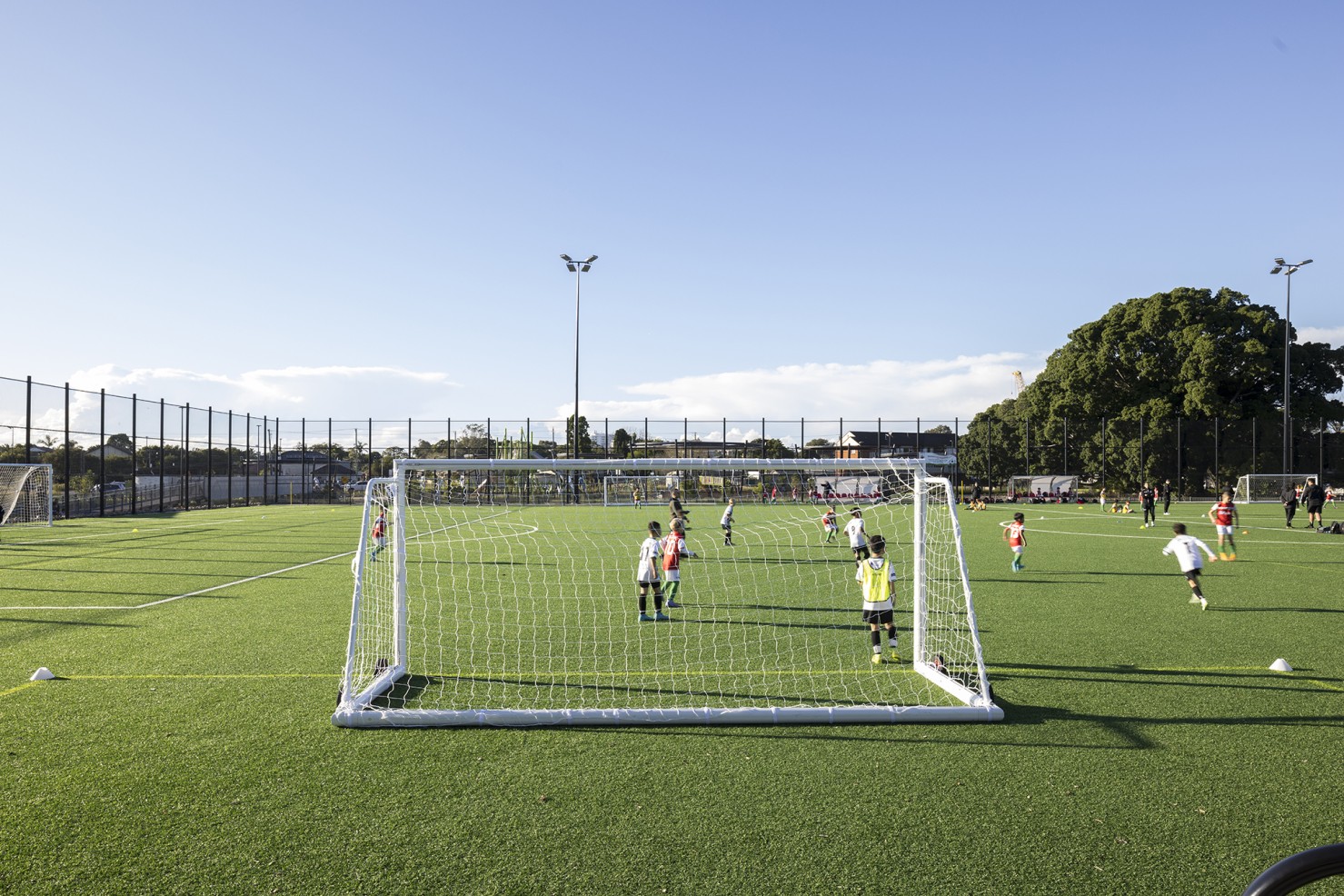
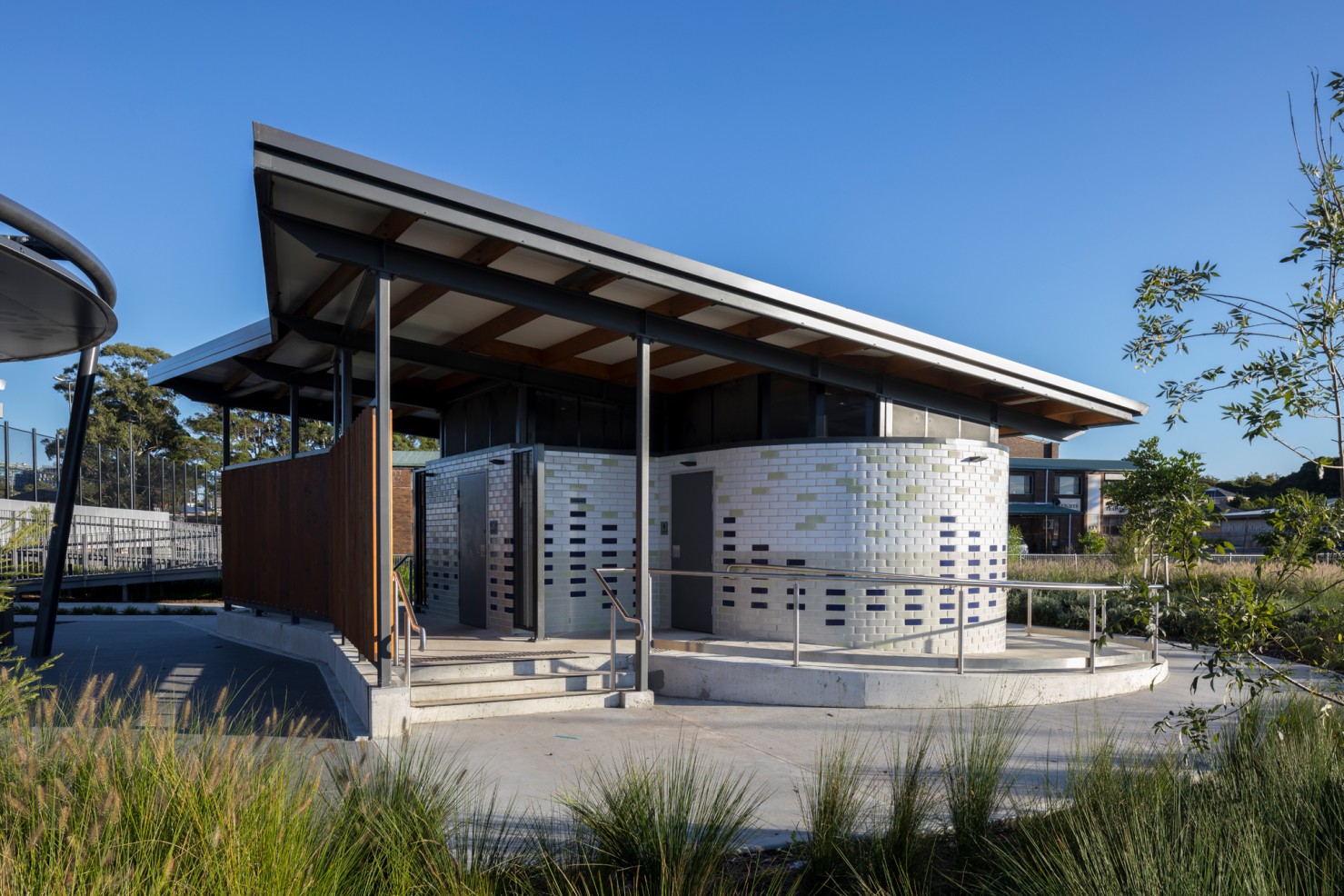
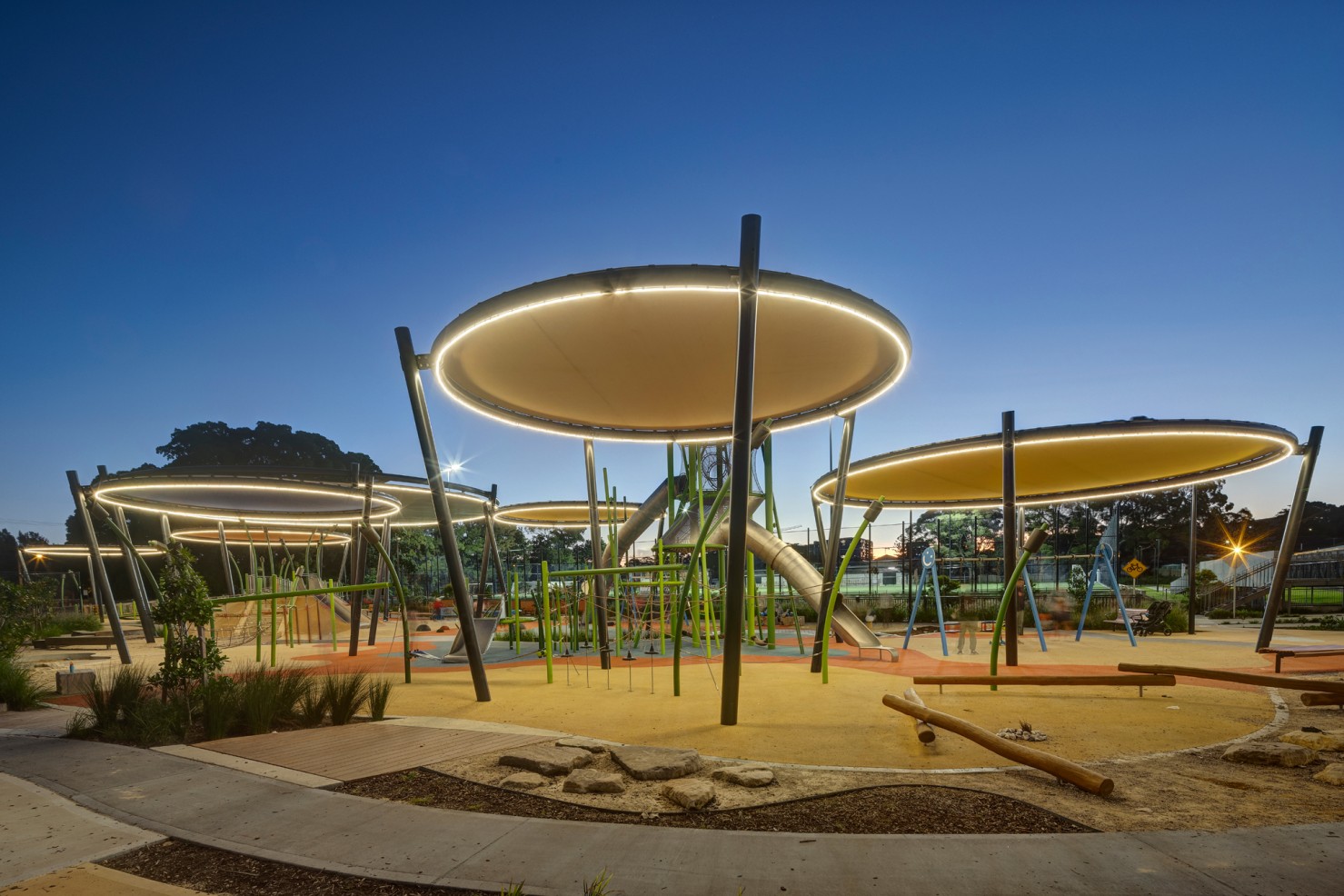
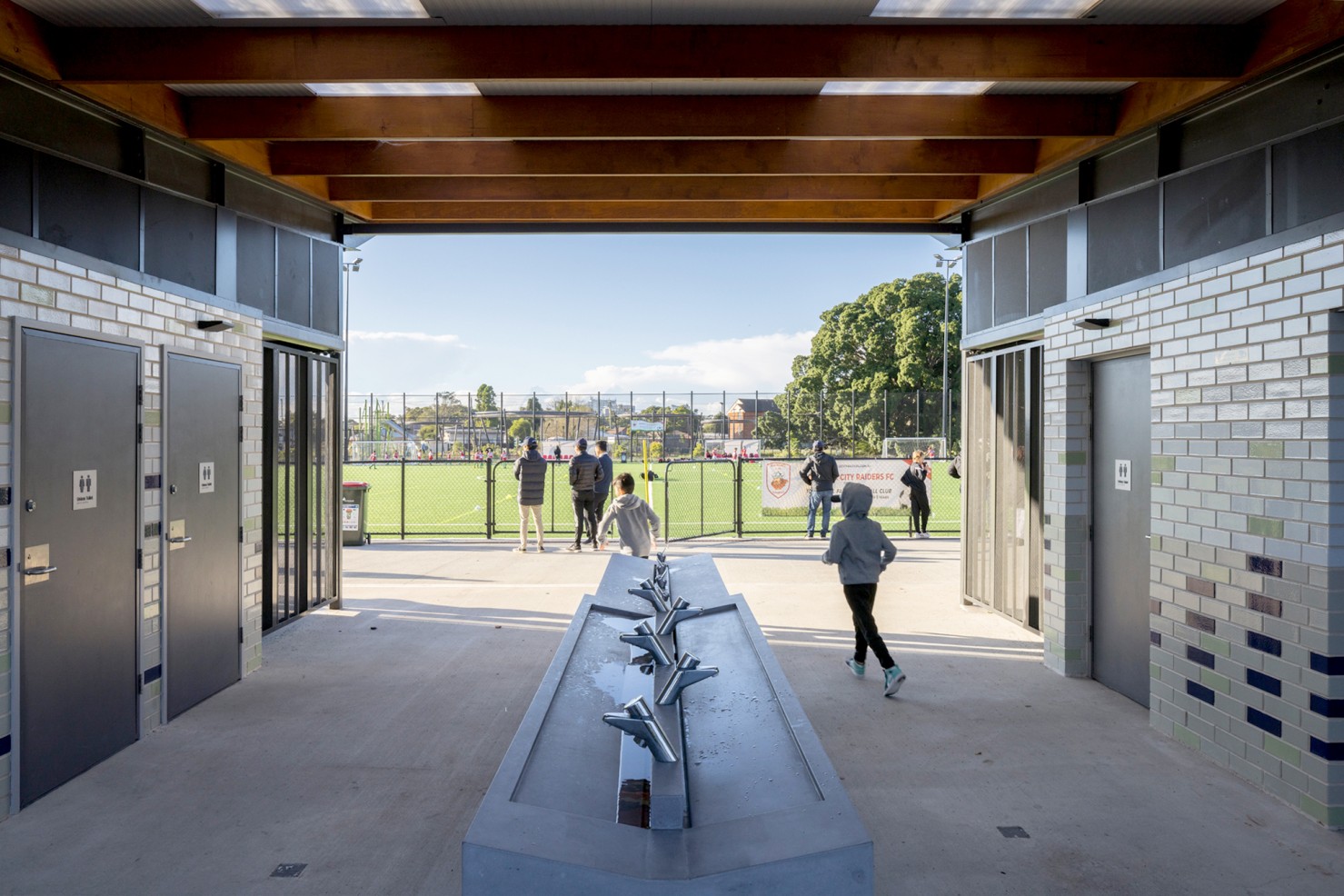
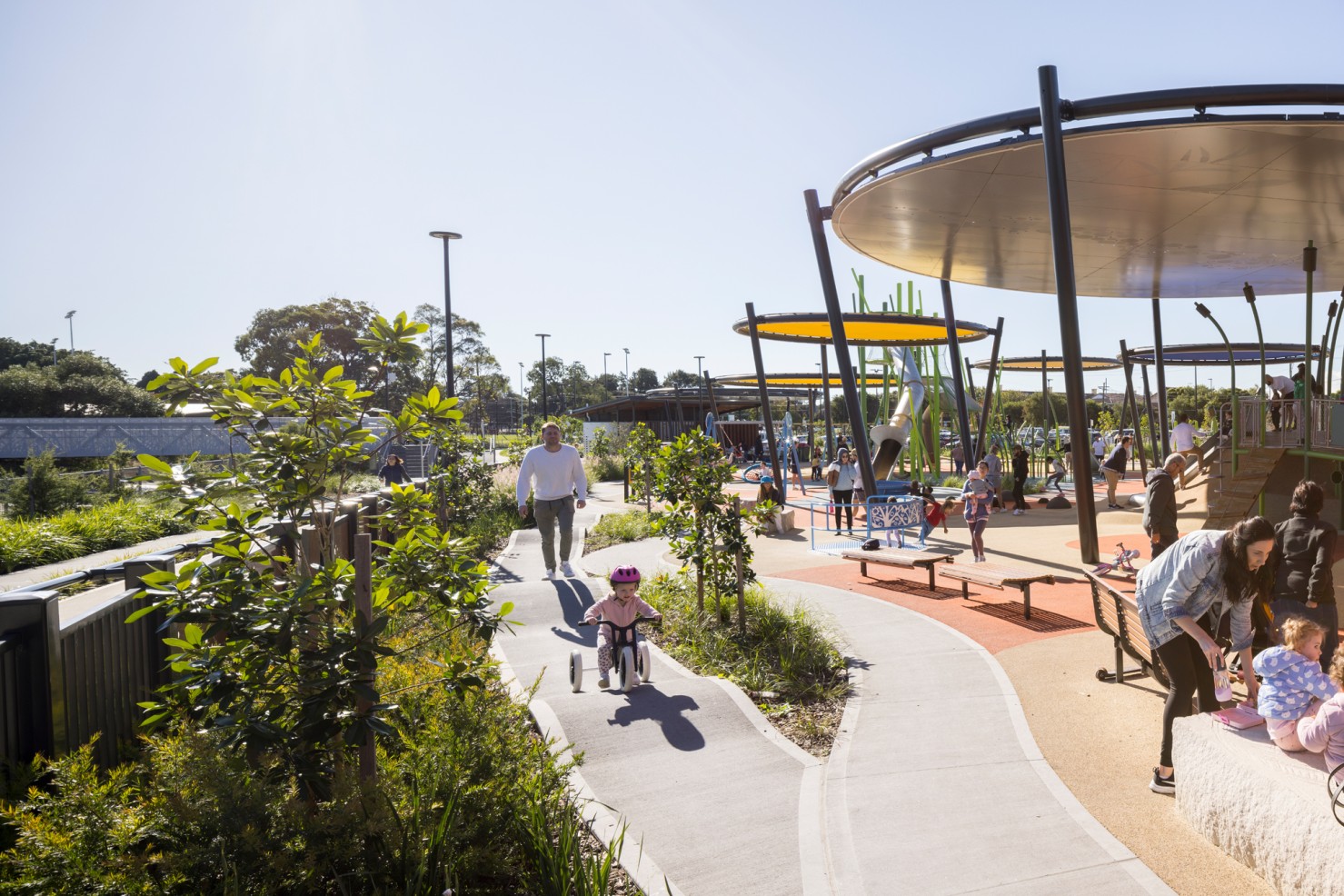
The second zone—Brighton Memorial Fields—has the following:
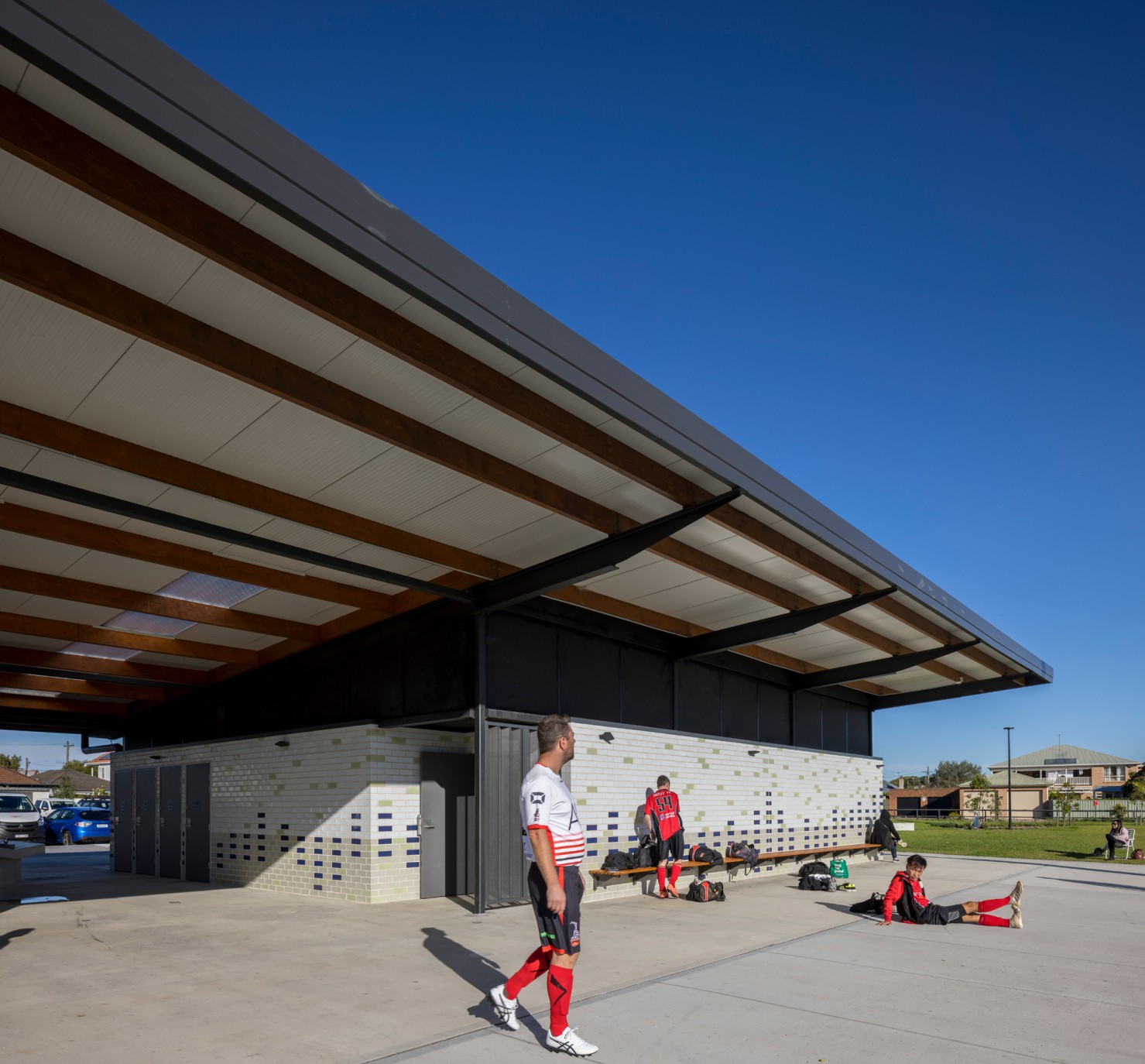
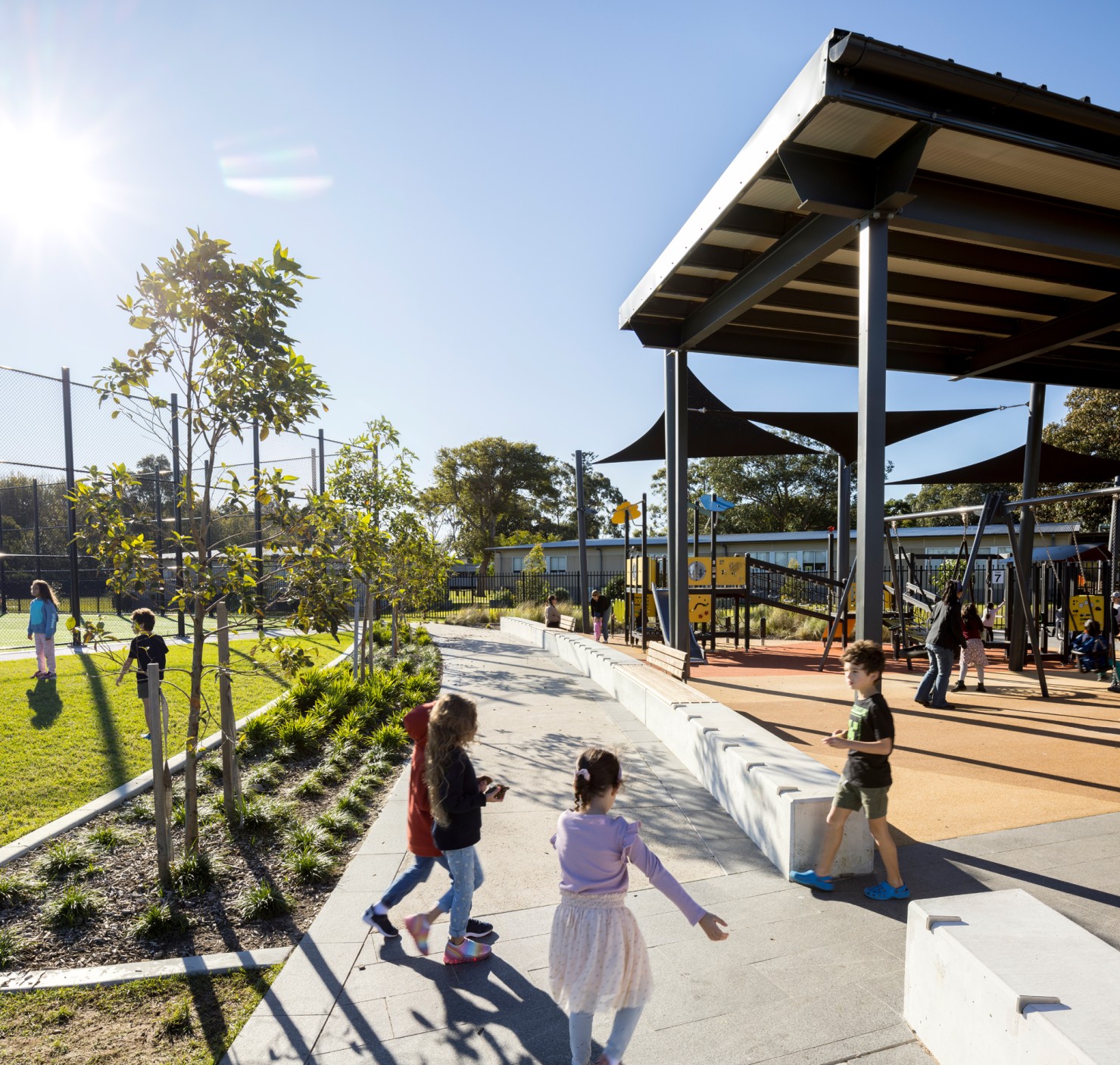
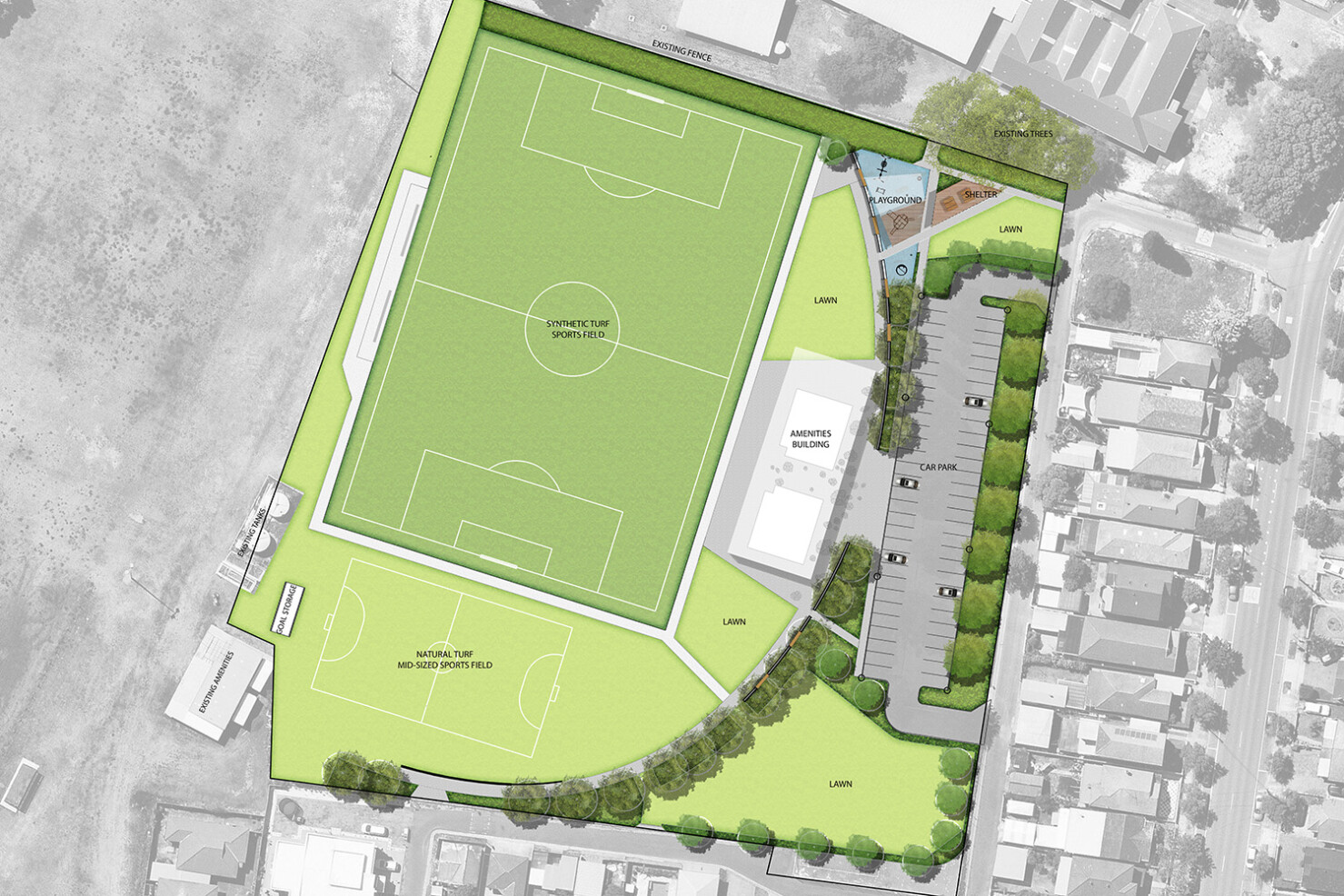
That’s a lot of facilities!
Yes, were lucky to have a fantastic client who supported all of the ideas we had, and were happy to include a broad range of facilities. They also supported high quality specification and construction. The facilities are all very well built—they will last.
Can you tell me about the interpretive storytelling in the parks?
As the name suggests, Brighton Memorial Fields is a memorial for war veterans. We worked closely with the local RSL group and the Australian War Memorial to develop interpretive signage that tells the story of Australia’s involvement in wars over the last 200 or so years. There is a six metre long timeline that maps out key moments in war, which apparently is the largest such signage piece that exists! We were able to include information of Aboriginal people in service, which is an important story that is only starting to be told.
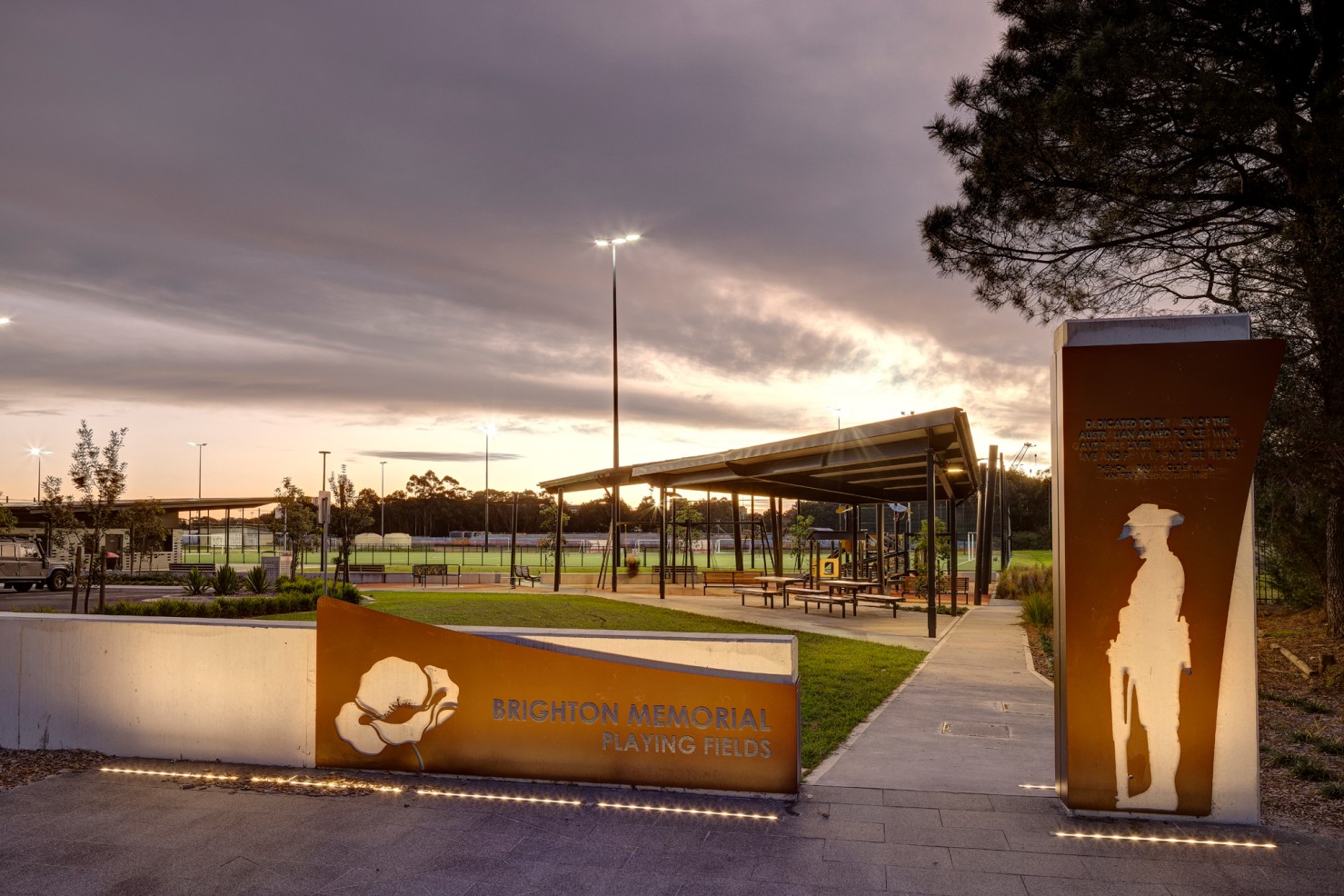
Gujaga Park is located on ‘Muddy Creek’—now a canal—and this became a key driver for the design. The landscape reintroduces endemic swamp plant species, with the aim of rebuilding biodiversity. An interpretive signage trail allows kids and adults to engage with and learn about the swamp ecosystem. We commissioned six large hand-carved sandstone sculptures of local fauna that sit in the landscape – they are beautiful, tactile and robust – kids can touch them and play on them. Over time the patina of the sandstone will weather, grow lichen and moss, and the sculptures will embed themselves into the landscape.
References to the natural landscape are woven into the built structures as well. Picnic shade structures are lined with perforated metal with local flora and fauna designs in them, casting subtle shadows into the BBQ areas during the day. Similarly, the balustrade on the bridge across the canal is perforated metal with a pattern of reeds and grasses, imposing a ‘natural’ reference into the somewhat industrialised waterway.
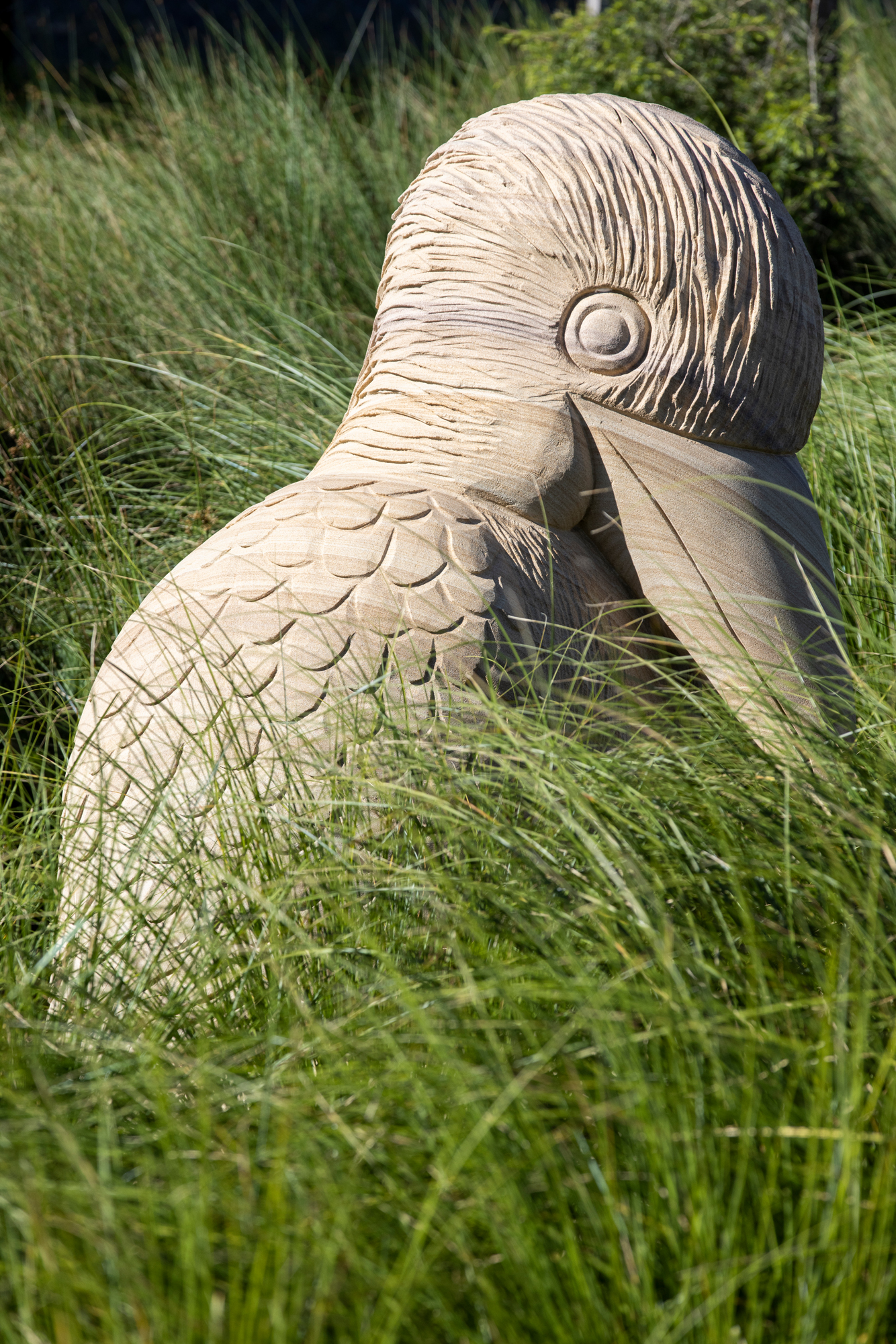
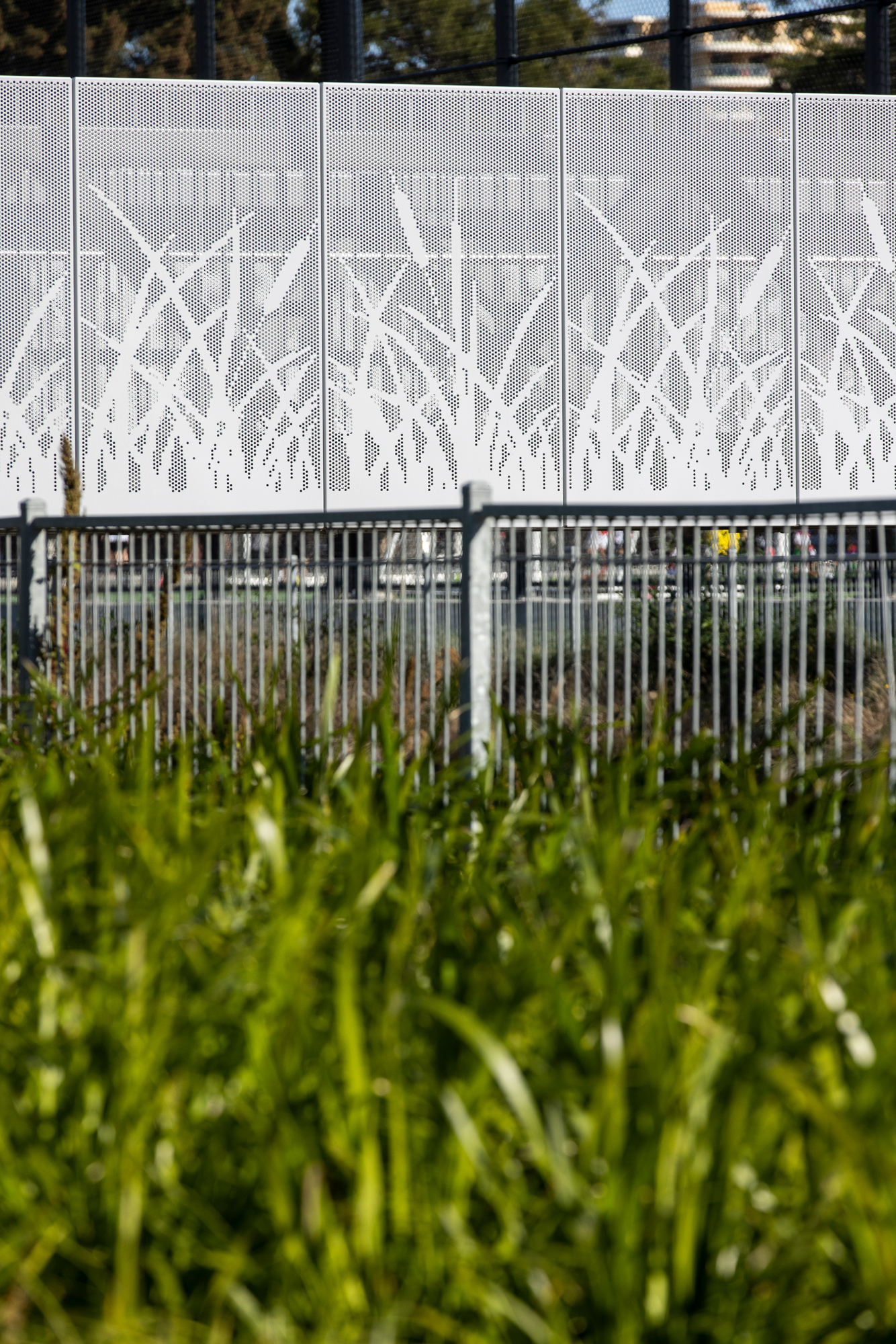
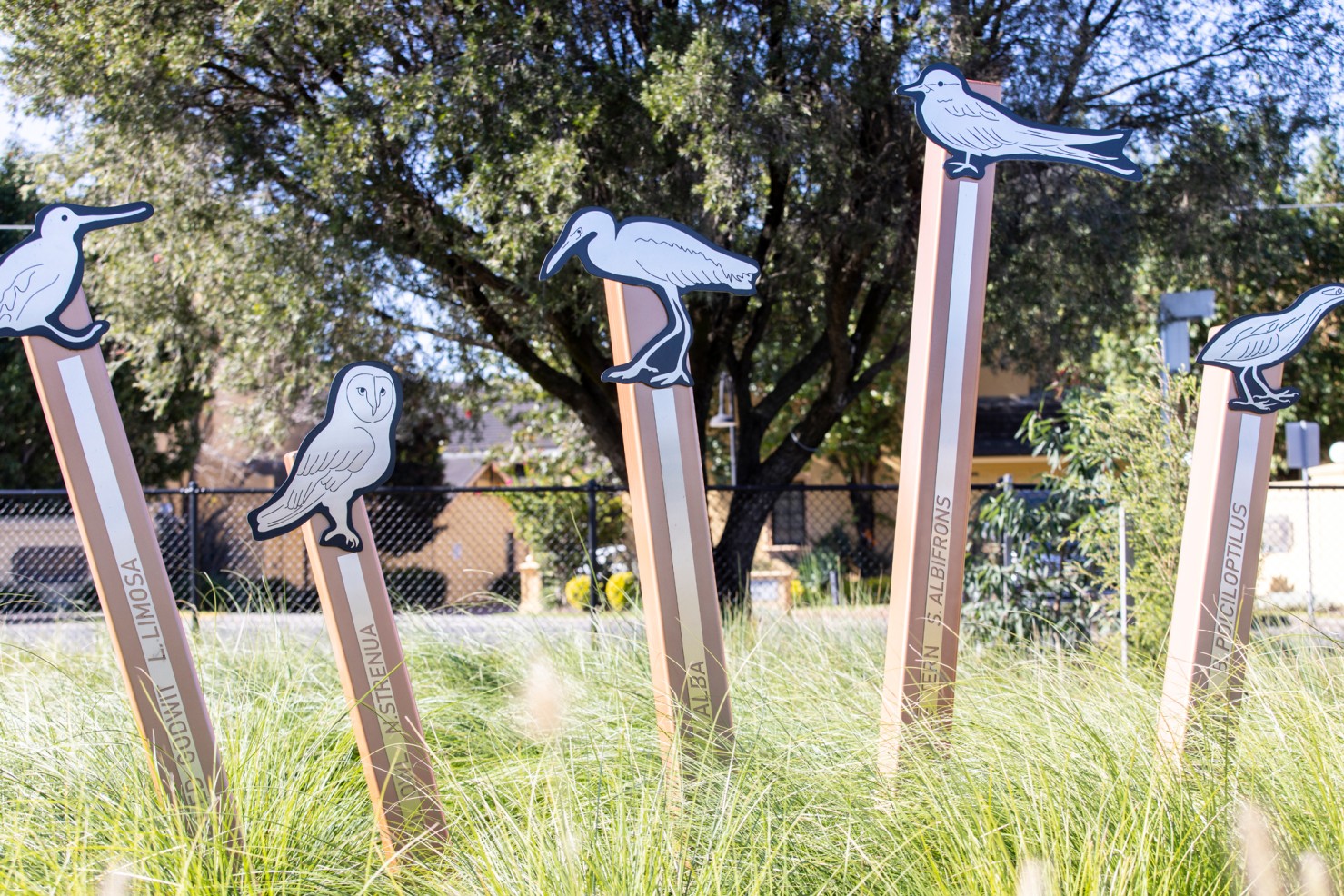
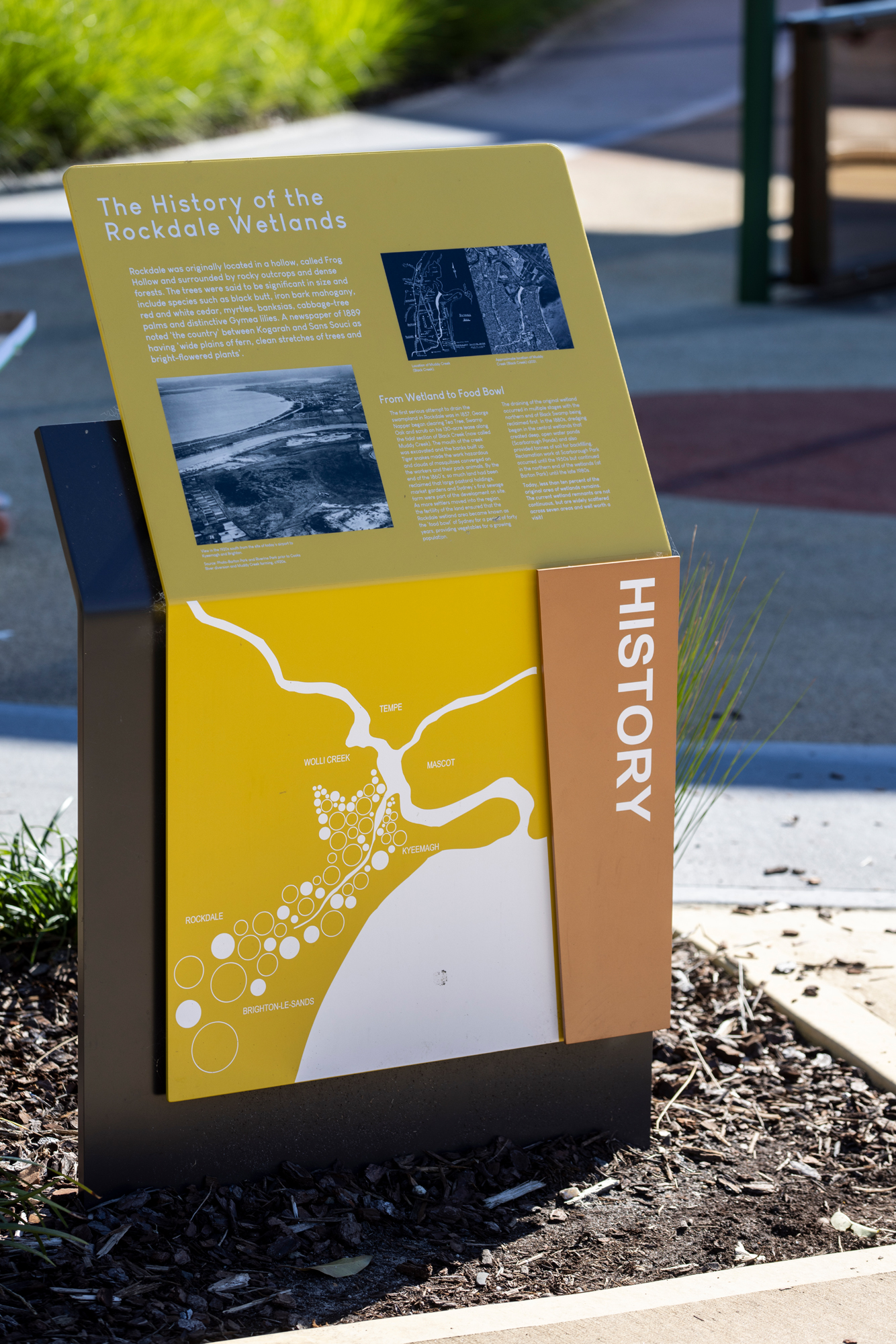
What was the timing of the project?
It was an incredibly tight timeline. We were commissioned in early 2020, and the parks opened in January 2022. That’s less than two years from initial planning to completion, including construction!
Wow, that’s super tight. How do you manage to deliver such successful within this tight timeframe?
I think they key was the integrated nature of both our design team, and the broader project team. DesignInc provided integrated design services from start to finish, including master planning, landscape design, architectural design and interpretive design of the signage elements. Having all of the designers in the same organisation meant we could collaborate, communicate, bounce ideas off each other, check in with the logic behind particular decisions along the way. It allowed us to quickly respond to requests or challenges, make decisions on the fly while retaining the integrity of the overarching design.
In addition, the broader project team was incredibly tight, respectful and efficient. We worked closely with Cardno, Transport. Essentially, it was a great group of people working together!
It sounds like you had a dream team, but there must have been challenges along the way, can you tell me about some of these?
Well, there were definitely a lot of changes to the design during the construction phase. We often had to made decisions on the ground, which has the potential to be challenging, but being a tight team, we embraced the ‘fluidity’ and looked for opportunities within the changing parameters.
For example, when the six large sandstone sculptures arrived on site they were 1.5 times bigger than we had thought, and most of them didn’t fit where they were meant to go. This was a result of being hand crafted, as the maker started with a basic design but the form evolved as he was carving them, and they ended up being bigger than anticipated. When we saw them arrive on site we realised the mismatch with the scale, but we also realised what dramatically stunning objects they were! We embraced the size and changed their locations to suit. They now sit in the landscape, and the plants are growing up around them, siting them so well. We couldn’t have planned a better result!
What are some of the sustainability initiatives?
The project balances a range of environmental, social and economic sustainability features.
Environmental sustainability features include: WSUD and selection of plant species endemic to the area that are fit for purpose so require minimal additional water and nutrients, and over time will support biodiversity. There are water tanks attached to the amenities buildings, capturing and storing water for irrigation. The urban heat island effect is minimised by inclusion of generous shade structures, use of light-coloured concrete for pathways and carparks, and dense planting that will provide ground cover and shade over time as they grow. An existing bore was reinstated to help irrigate the plants in their establishment phase and during future droughts. With a combination of grass and synthetic playing fields, the parks balance the need for irrigation in drought times with the benefits of year-round facilities.
Social sustainability is really important for this project. The facilities are thoughtfully designed to be inclusive and support a wide range of communities and individuals to be healthy and connected. Diverse fitness needs are enabled by the multi-sport fields, the fitness equipment that is tailored to seniors and rehabilitation, the skate park as well as the active transport pathways through the parks for cycling, walking and running. Children are encouraged to be active though playgrounds which contain accessible equipment, pathways for scooters and bikes and nature play zones, all supported by shaded seating areas for carers and amenities such as bathrooms and bubblers. Gathering spaces such as picnic and BBQ areas provide opportunities for connection, with families and communities gathering to socialise, relax and eat together.
Interpretive signage at both parks also supports social sustainability, educating the community about stories relevant to the location. Brighton Memorial Fields is an important place for returned service people and their communities for reflection and education.
Economic sustainability is supported by the proposed longevity of these parks. The equipment, plants, and built structures have all been designed to be durable, robust and long lasting. Programmatically, by catering for a diverse range of needs, the parks are intended to be future-proof, and meet the needs of the community for generations to come.
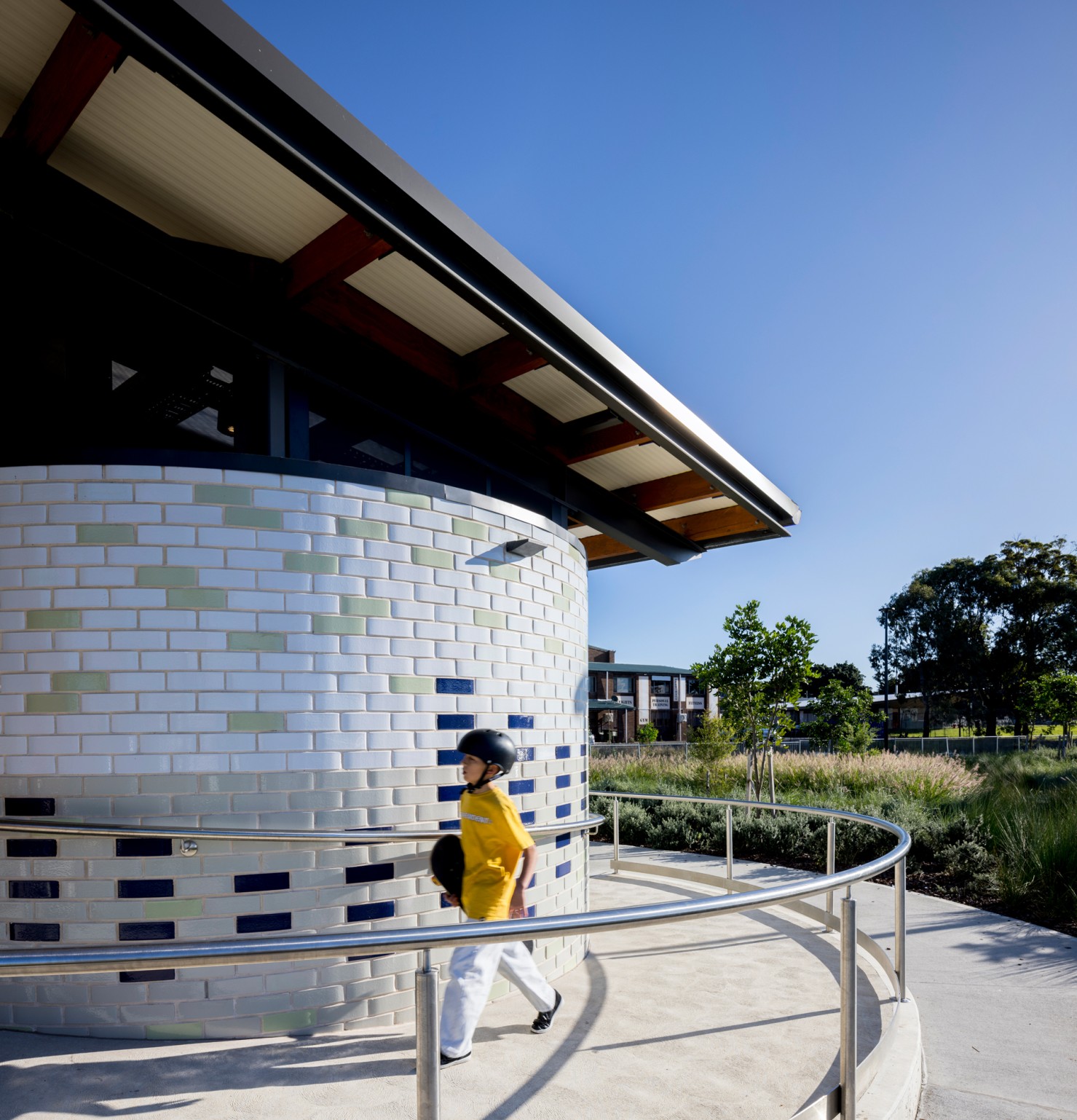
And a final question, what have been some of the highlights of your experience working on this project?
The biggest thing for me is the delight in seeing how the parks are truly loved and used by the community. It is incredible to see so many people using the facilities, and sharing their love of them with their communities. Pro skaters come to the skate park and post about it on their social media channels. I love that! It shows that we have created something that people connect with and love, and to me, that’s a job well done.
Thanks Michael, indeed, a job well done.